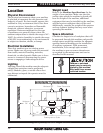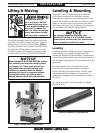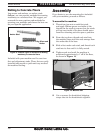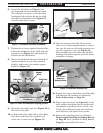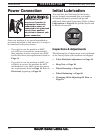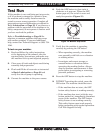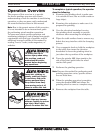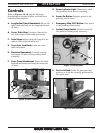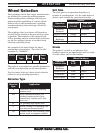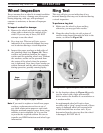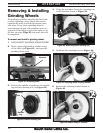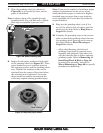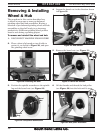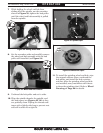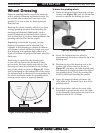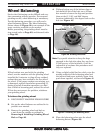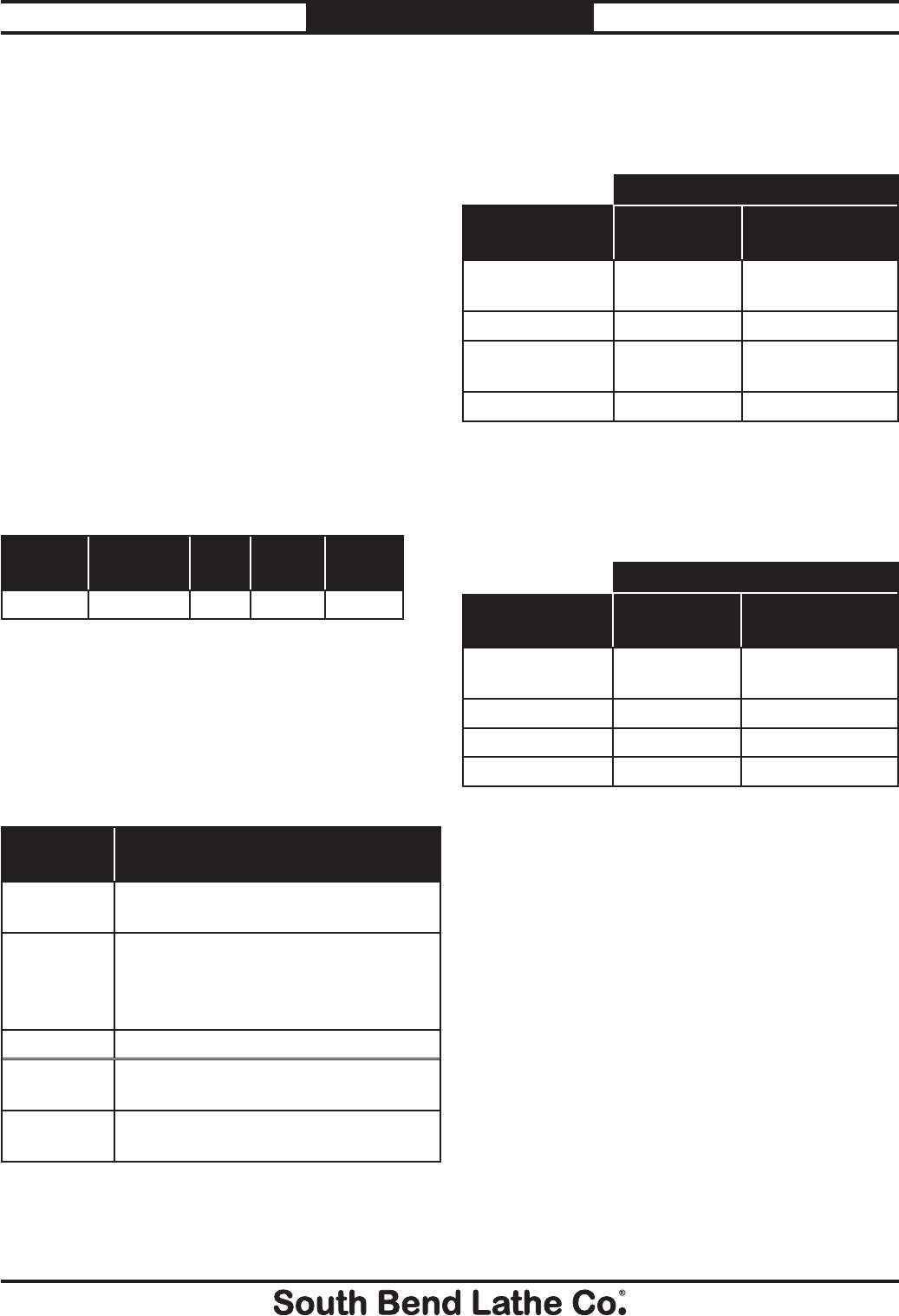
-22-
For Machines Mfg. Since 8/09
Model SB1029
OPERATION
Wheel Selection
Most grinding wheels from major manufacturers
are marked in a somewhat uniform manner.
Understanding these markings will help you
understand the capabilities of various wheels.
Always refer to the manufacturer’s grinding
recommendations when selecting a wheel for
your project.
The grinding wheel you choose will depend on
several factors related to the operation you plan
to perform. The hardness of the material you
will be grinding and the surface finish you desire
are the two primary factors to consider when
selecting a grinding wheel.
An example of the basic format for wheel
numbering is shown below. The wheel in this
example is a "36A60LV".
Prefix Abrasive
Type
Grit
Size
Grade Bond
Type
36 A 60 L V
Results
Operation
Consideration
Coarse Grit
(10–46)
Fine Grit
(54–180)
Material
Removal
Increased Decreased
Surface Finish Rough Smooth
Workpiece
Hardness
Soft Hard
Width of Cut Wide Narrow
The prefix is a manufacturer-specific designation
and will vary depending on the manufacturer.
Use the charts below as a basic wheel selection
outline for most grinding operations.
Abrasive Type
Abrasive
Type
Application
A Aluminum Oxide: For grinding
common steel.
WA White Aluminum Oxide: For
grinding harder metals (heat
treated steel, carbon steel, alloy
steel, etc.).
H For grinding high speed steel.
C Silicon Carbide: For grinding cast
iron and non-ferrous metals.
CG Ceramic Grain: For extremely hard
metals, such as tungsten carbide.
Grit Size
The ideal grit for an operation depends on a
number of considerations. Use the table below to
choose a grit suitable for your desired results.
Grade
The grade of a wheel is an indicator of its
hardness based on an alphabetical scale in which
A is the softest and Z is the hardest.
Wheel Hardness
Operation
Consideration
Soft
A–M
Hard
N–Z
Workpiece
Hardness
Hard Soft
Width of Cut Wide Narrow
Feed Rate Slow Fast
Wheel Speed Fast Slow



